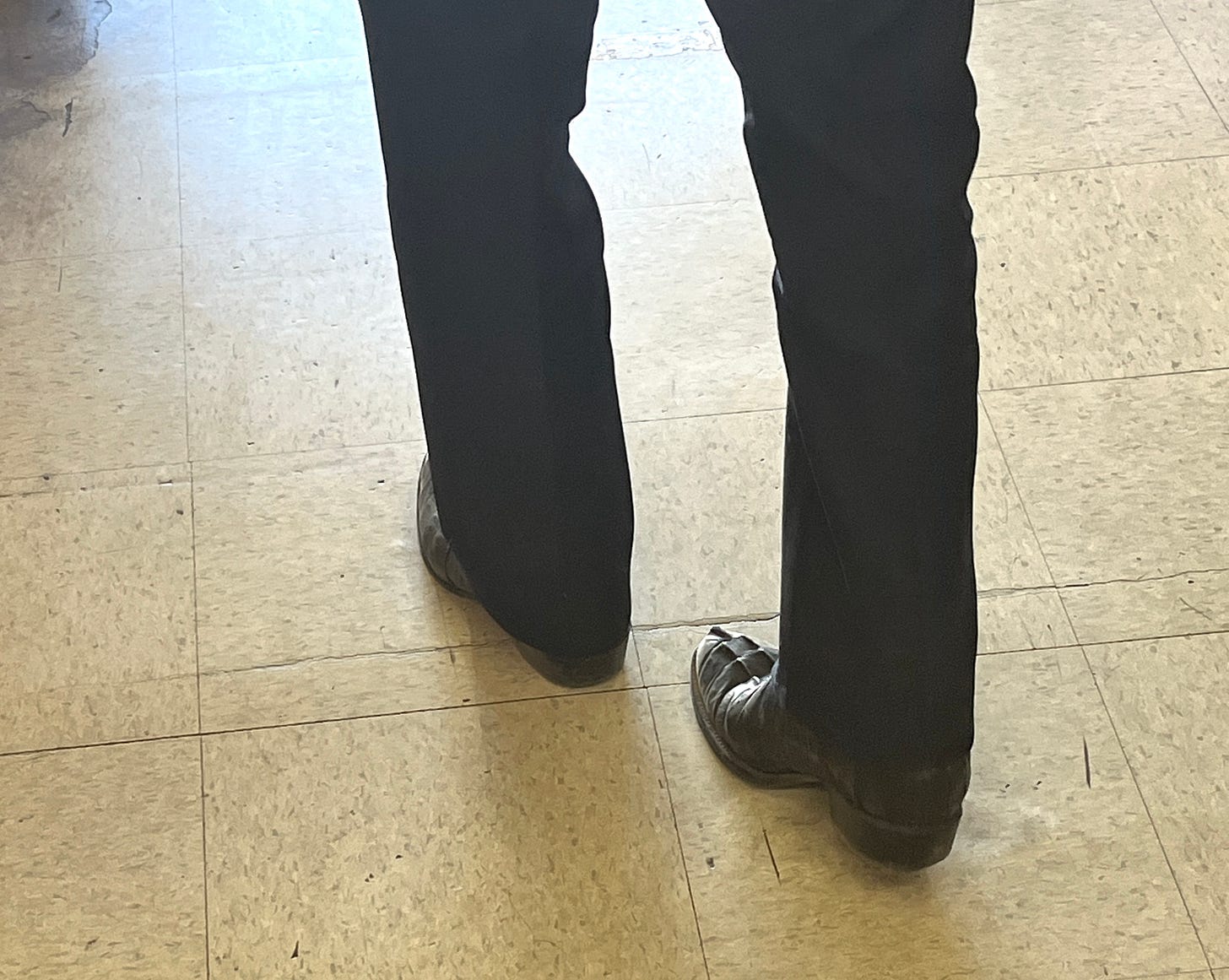For the last month, I’ve dreamt of death, of bare feet in theaters, of my friend laying lifeless in a field; the veil is thin. My friend whose grandfather was a Bulgarian dream interpreter told me that dreams of death signal new beginnings. On the solstice, the day after my birthday, old friends gathered at the Center of the World, declared by an old French man named Jacques-Andre Istel, who bought the land in the 1950s and incorporated it as a town named Felicity, after his wife, Felicia. We came together to celebrate the marriage of our friends, on the hill the man had graded and built a small surreal chapel, as the sunset across the free land desert around us.
We slept in a hotel across the state border in Arizona where the time changed forward by one hour. The Historic Coronado Motor Hotel was rundown and home to at least one cat, a loud dog, and a handful of people doing some sort of nefarious business in the room next to ours, judging by the amount of people arrived and exited at all hours of the night, the way a woman looked out of the window expectantly when we pulled into the dark parking lot.
The theme of Yuma, the closest town to Felicity (the latter being a mysterious and fascinating place I will let you do your own research on because it’s delicious and fun to uncover yourself), seems to be a town whose tourism is themed on prison. According to DesertUSA, “Yuma Territorial Prison is a living museum of the Old West. More than 3,000 desperadoes, convicted of crimes ranging from polygamy to murder, were imprisoned in rock and adobe cells here during the prison's 33-year existence between 1876 and 1909.”
Restaurants named after prisons and jails, a historic building whose copper plaque thanked the Correctional Department for its labor (yes, the building was made by inmates); it’s no secret that the U.S. was built by slaves and fueled by immigrant labor, despite our vocal politics that lie to the contrary. What I find fascinating is that despite the online obsession with nostalgia—the pastel 1980s bedrooms, the ongoing cowboy obsession, the trend of sifting through Google StreetView to find your childhood home from 2007—there are many, many places where these “liminal,” “forgotten,” or “nostalgic” aesthetics continue to exist untouched. Collective memory grows shorter and shorter with every rapid trend—I still vivdly remember life without the internet—however the sensation of watching younger generations “discover” phenomena or aesthetics that happened fairly recently as if they’re uncovering some ancient archeological artifacts disturbs my sense of temporality. Meanwhile, towns whose populations sit at or below the poverty line fail to “update” because of the former, yet their aesthetics are coveted. Do we continue to lionize deprivation and nostalgia because futurism is ugly and violent?
Offline, I enjoy geologic time, or try to. My phone time was down 45%, I spent more time looking into the faces of my friends than the screen of my phone or laptop, in fact I didn’t even crack open the latter until just now to dash this off to you, my patient substack readers.

And now, I don’t do year end lists because we are living through a genocide, but here are three published pieces that I loved writing this year:
Protesters Call Out Art World’s Silence on Gaza at Frieze LA Fair, for Hyperallergic
From Michael Kors and to poorly managed lip filler, some of the worst and richest people emerged from the Frieze LA art fair, wine drunk on Chardonnay and said some outrageous things to protestors rallying for Palestine.
Recombination Dance, for New York Review of Architecture
Julia Bryan-Wilson wrote one of the best and innovative artist monographs this year on Louise Nevelson. She split the classic tome format into four slender volumes which made it that much easier to read and explore Nevelson’s undersung career. My favorite tip was learning that Noah Purifoy admired Nevelson’s work and that many of his compositions at his Outdoor Desert Museum were homages to her. After writing this review, which was edited by the brilliant Marianele D’Aprile, I found myself in Joshua Tree and spent an hour with Purifoy’s walls and made the visual connections for myself.
How San Diego Gave Rise to the Country’s First Legal Nude Beach, for Dwell
I love my editor at Dwell, who lovingly let me keep the phrase “tits out and in tears” for my part-memoir, part-history lesson on one of the best nude beaches in America, and also in my hometown of San Diego, Black’s Beach.
And finally, a holiday favor (besides subscribing to West Ends) via this tweet:
Medical fundraiser for former political prisoner, Black Panther veteran, and Black Liberation Army co-founder Dhoruba Bin Wahad. Please cashapp $Dhoruba to help him cover medical bills for his treatment. ☼










